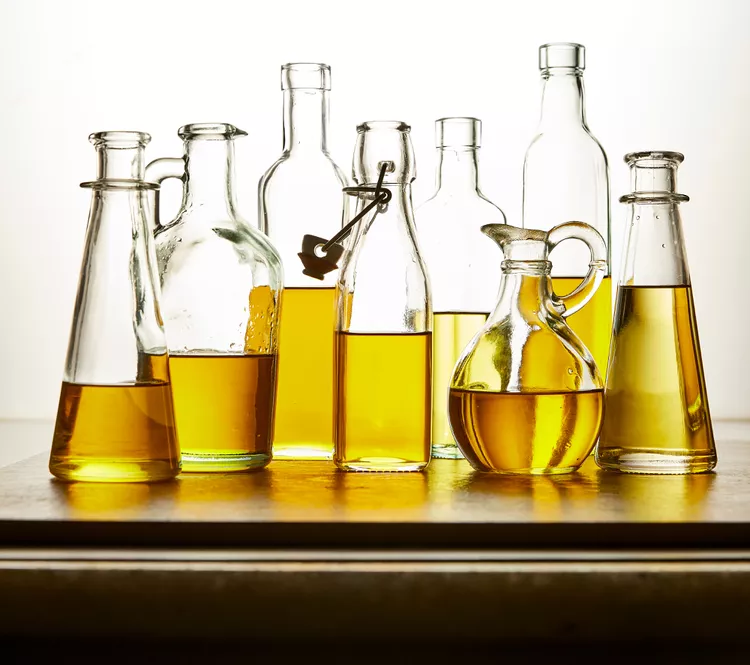Is There a Difference Between Olive Oil and Extra Virgin? Find Out Why It Matters

Olive oil has been lauded as one of the most heart-healthy ingredients on Earth, but it comes in several grades. Here, we'll walk you through how to shop the shelves for the best-quality olive oil. Plus, we're sharing the common terms you may see on olive oil labels.
- Meggan Hill, executive chef at Culinary Hill Test Kitchen in Valencia, California
What Is Extra Virgin Olive Oil (EVOO)?
EVOO guidelines state that it cannot be treated with chemicals, fruits, or heat over 80°F, and it must be rigorously tested for taste and acidity. EVOO is often considered the purest version of olive oil, according to Meggan Hill, executive chef at Culinary Hill Test Kitchen in Valencia, California. But it comes with a heftier price tag than other olive oils. “EVOO retains all of its natural polyphenols, antioxidants that may fight heart disease and even premature aging,” Hill says. “It’s the preferred oil of many chefs, especially in Italy and Greece.” EVOO can be found in hues from dark green to bright gold, depending on the maturity of the olives when picked.
Test Kitchen Tip: When buying olive oil, don't worry about one color being better than the other. The color of olive oil does not indicate quality.
The Best Ways to Use Extra Virgin Olive Oil
Drizzle EVOO over any food as a finishing oil, whisk it into salad dressing, or use it as a dip for bread. Cook with it at temperatures below 350°F (EVOO’s smoke point is 350°F to 410°F)
What Is Olive Oil?
Typically made with a blend of different olive oils, including extra virgin, anything marked “olive oil” may be more processed than EVOO and has been heat-treated. As a result, it loses some of the natural vitamins and polyphenols present in EVOO, but it becomes more versatile. “The color may vary from pale yellow to dark green, depending on the exact blend, and the flavor can vary from no taste to strong and fruity,” Hill says. If you see an oil labeled "light," it refers to a refined oil that's light in color or flavor, and does not reflect a product that's lower in calories.
The Best Ways to Use Olive Oil
With a smoke point of 374°F to 405°F, olive oil can be used for sautéing, roasting, or pan-frying foods, just as you might use canola, vegetable, peanut, or corn oil.
Things to Look for On the Label
Check the label before you purchase. Here’s how to spot a high-quality olive oil.
- Country of Origin: The U.S. Food and Drug Administration mandates that olive oil labels tell where the olives were grown and where the oil was produced and bottled. Some countries, such as Italy, bottle oils imported from other countries.
- Date: Although not required, many bottles of oil list harvest dates or “best-by” dates to ensure the highest quality. For best flavor, the date of harvest or bottling should be within two years of the “best-by” date.
- Seals of Certification: Certain seals provide a degree of agricultural and processing integrity to the products they adorn. For example, Protected Geographical Indication (PGI) means a product was produced in the geographic area used in the name.
- Filtered vs. Unfiltered: You may see unfiltered olive oils available, which can appear cloudy. Many unfiltered olive oils have small bits of olive flesh in them. These will have shorter shelf lives than clearer filtered olive oils.
How to Store Olive Oil
Heat, light, and oxygen are the enemies of olive oil. Some olive oils come in tins or dark-color bottles, which protect them from sunlight. Keep your oil tightly sealed in a cool, dark cupboard as far away from the heat of appliances as possible. If it takes you a while to use up olive oil, purchase it in smaller bottles or containers. If your oil starts to taste bitter or has an off-flavor, it’s time to start fresh.